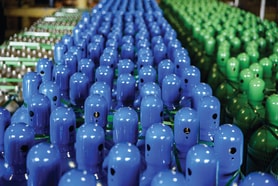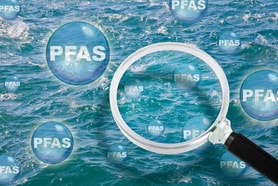Refrigerant gases
Throughout recorded history mankind has used ice as a method of preserving food by cooling it. Alexander the Great served snow cooled drinks to his soldiers in the 3rd century BC and Khalif Madhi used ice as the refrigerant for his caravans crossing the desert to Mecca in the 8th century AD.
By the 1800s the ice trade had become big business with companies cutting hundreds of thousands of tons of ice from rivers such as the Hudson and shipping it as far as the West Indies in sawdust insulated containers. This practice continued well into the 20th century, even after the development of artificial ice, sold as a $quot;more natural$quot; method of ice production.
In the 18th century it was noticed that evaporating ether cooled the skin and in 1755 evaporating ether was used to produce ice by Professor William Cullen. The principle behind this discovery is that a vapourising liquid requires kinetic energy and draws it from the surrounding area – which loses energy and becomes cooler.
Cooling caused by the rapid expansion of gases is the primary means of refrigeration today. In the modern refrigeration system, the refrigerant gas is compressed using a compressor before entering a condenser where it is cooled and condensed to a liquid. After this it goes through an expansion valve where the pressure rapidly decreases, causing flash evaporation and resulting in a mixture of liquid and vapour at a lower temperature and pressure. The cold liquid-vapour mixture then travels through the evaporator coil or tubes and is completely vaporized by cooling the warm air from the space being refrigerated being blown by a fan across the evaporator coil or tubes. The resulting refrigerant vapour returns to the compressor inlet to complete the thermodynamic cycle.
... to continue reading you must be subscribed









